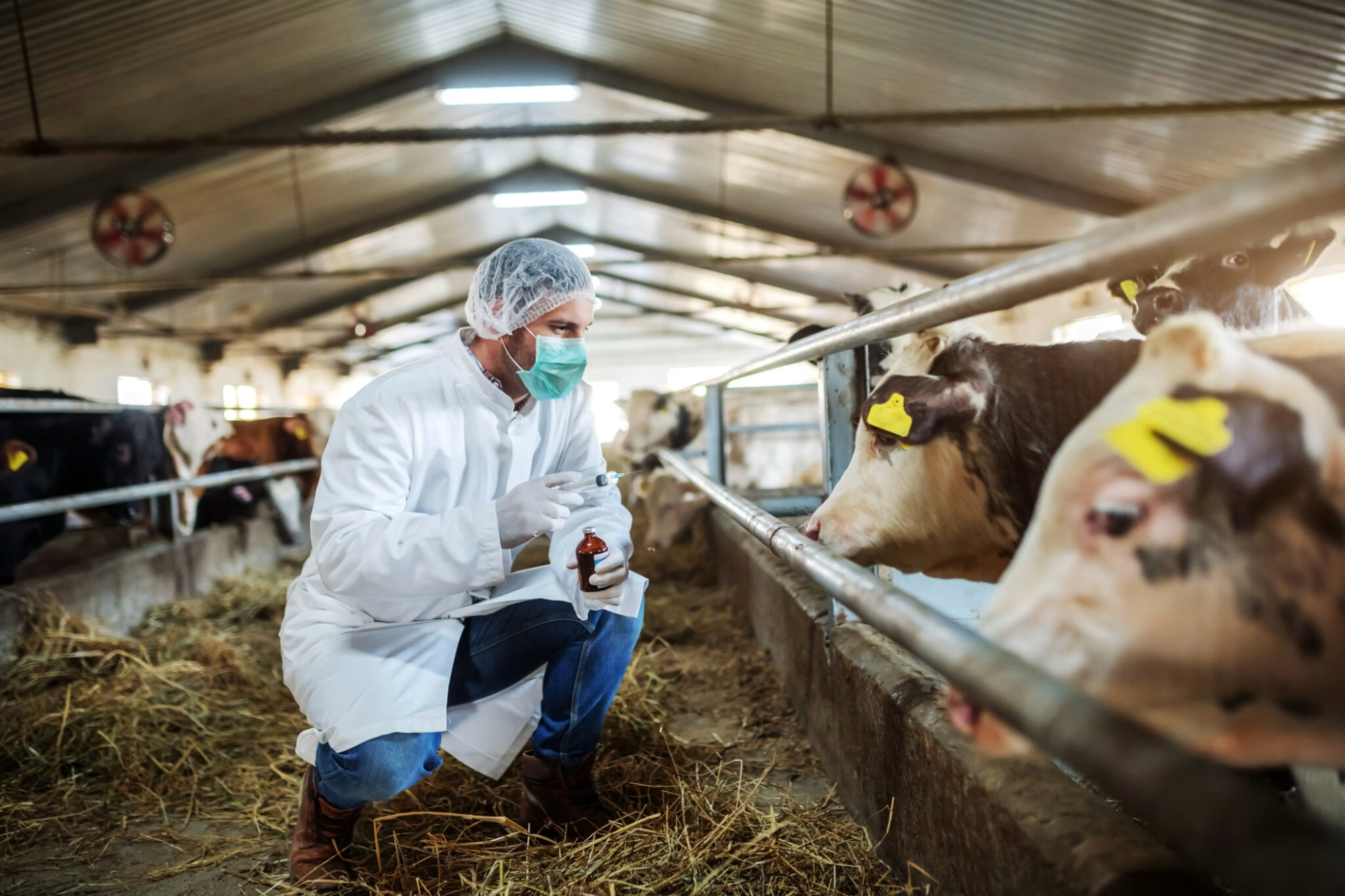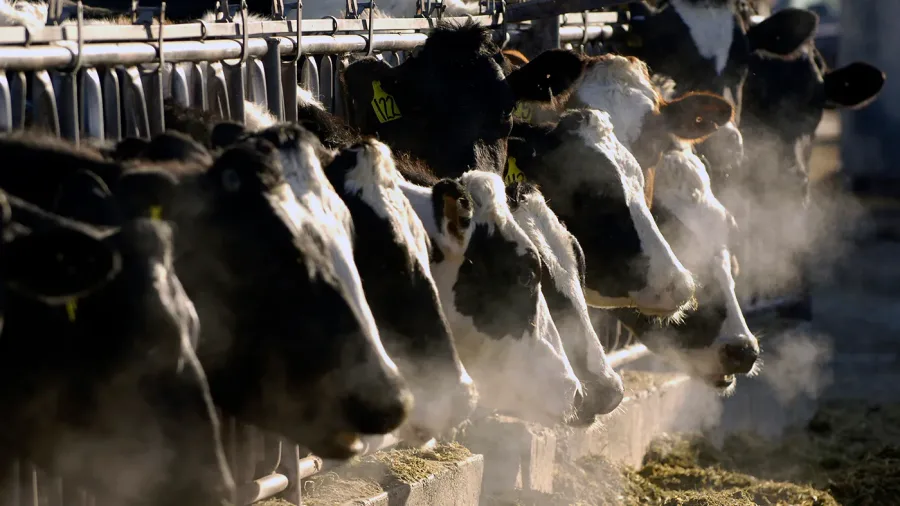Learn about the fourth human case of bird flu in a Colorado dairy farm worker. How does this impact public health and what precautions should be taken?

In a world increasingly aware of emerging diseases, the recent diagnosis of the fourth human case of highly pathogenic avian influenza, or bird flu, in a Colorado dairy farm worker has sparked fresh concerns. This new case highlights the ongoing risks of zoonotic diseases—illnesses that pass from animals to humans.
The Colorado case marks the first time bird flu has spread from dairy cattle to humans this year. Discover how the spread was identified, the precautions taken, and the national picture, which includes numerous infected dairy herds in multiple states.
Understanding these points is crucial for those affected and anyone interested in public health and preventive measures. Dr. Rachel Herlihy of the Colorado Department of Public Health and Environment notes that while the current risk to the general public remains low, those exposed to infected animals should exercise caution.
Colorado Dairy Farm Worker Diagnosed with Bird Flu: A Cautionary Tale
The recent case in Colorado involving an adult man working on a dairy farm in the northeastern part of the state is a unique and significant event. He developed mild symptoms, including eye inflammation or conjunctivitis, after direct contact with dairy cattle infected with H5N1. Public health officials monitored him, and he has since recovered following antiviral treatment.
After the farm’s cattle tested positive for H5N1, stricter biosecurity measures and movement restrictions were enforced. Genetic analysis confirmed H5N1 in the man, highlighting the need for precautions and protective gear for those in close contact with infected animals.
Minimizing Risks: Expert Guidance for Farm Workers
Dr. Rachel Herlihy, an epidemiologist with the Colorado Department of Public Health and Environment, emphasizes that the risk to the general population remains minimal. “The risk to most people remains low.” Avian flu viruses primarily spread among animals and are not adapted to human-to-human transmission.
Herlihy further states that those often in contact with infected animals face higher risks and should take precautions. This includes using personal protective equipment (PPE) like masks, gloves, and eye protection. Enhanced biosecurity measures are crucial to preventing the virus from spreading.
Other health officials back Herlihy’s advice, recommending regular monitoring and antiviral treatments for anyone exposed to H5N1-infected animals. While the general public is safe, those working with infected livestock should strictly follow safety protocols to minimize risks.
Bird Flu Outbreak: A Nationwide Crisis in the United States
Looking at the broader picture, the bird flu outbreak is no minor crisis in the United States. The U.S. Department of Agriculture has identified bird flu in 139 dairy herds across several states, including Colorado, Idaho, and Texas. Meanwhile, more than 97 million poultry have tested positive for H5N1 since January 2022. This vast spread calls for stringent biosecurity measures.
Comparing Impacts: Bird Flu’s Varied Effects on Dairy Cattle and Poultry
Bird flu affects dairy cattle and poultry very differently. H5N1 typically leads to symptoms like conjunctivitis for dairy cows, but these animals usually recover with proper care. Infected dairy cattle aren’t culled; they’re treated and monitored.
In contrast, poultry flocks face a harsher reality. Due to the virus’s high transmissibility and severe impact on birds, entire flocks are culled once an infection is confirmed. This culling results in significant economic losses for poultry farmers and requires strict biosecurity measures.
The poultry industry has had more time to adjust, with workers becoming accustomed to wearing personal protective equipment (PPE) and following established biosecurity protocols. Dairy farmers are newer to this threat and may lack the same preparedness and resources, highlighting the need for better training and support to manage outbreaks effectively.
Both industries face significant challenges, but the differences in outcomes and preparedness underscore the need for continuous vigilance and tailored strategies to protect animals and human workers.
Tracing Bird Flu in the U.S.: Past Cases and Present Precautions
Historically, the U.S. has seen several human cases of bird flu. This year, three other cases emerged: two in Michigan dairy farm workers and one in Texas. These cases mainly involved pink eye and mild respiratory issues. The last reported case in Colorado was in 2022 from infected poultry. Each individual was isolated, treated with antiviral medication, and recovered, preventing further spread.
Proactive Measures: USDA Pilot Program for Dairy Farmers
In late June, the USDA introduced a voluntary pilot program to combat bird flu spread in dairy herds. This initiative allows dairy farmers to test their herd’s bulk milk tanks for H5N1. The goal is to transport healthy cattle across state lines safely. Early detection through milk testing reduces virus spread risk, demonstrating a proactive approach to biosecurity and public health.
The Bottom Line
In the wake of the recent bird flu case in a Colorado dairy farm worker, officials emphasize that while public risk remains low, farm workers must take precautions. We’ve noted the spread of bird flu among dairy herds across various states and highlighted the recommended preventive measures. This outbreak underscores the critical connection between animal and public health. Proactive steps like enhanced testing and vaccines are vital. Effective outbreak management hinges on cooperation among farmers, health officials, and agencies. Your cooperation is crucial to overcoming this challenge. Staying informed and ready is our best defense. Let’s prioritize safety to protect our livestock and communities. Together, we can manage this outbreak effectively.
Key Takeaways:
- Fourth human case of highly pathogenic avian influenza (H5N1) diagnosed in the U.S. this year.
- First case in Colorado linked to dairy cattle transmission to a human.
- Infected individual, a farm worker, experienced conjunctivitis (pink eye) and has recovered.
- State public health department reassures that risk to the general public remains low.
- Precautions recommended for those with regular contact with infected animals.
- Avian flu detected in 139 dairy herds across 12 states since the outbreak began.
- The U.S. government allocated $176 million for vaccine development against H5N1.
Summary:
The fourth human case of highly pathogenic bird flu in a Colorado dairy farm worker has raised concerns about the ongoing risks of zoonotic diseases, which pass from animals to humans. This case marks the first time bird flu has spread from dairy cattle to humans this year. Dr. Rachel Herlihy of the Colorado Department of Public Health and Environment emphasizes the need for precautions and protective gear for those in close contact with infected animals. The bird flu outbreak is a nationwide crisis in the United States, with over 97 million poultry testing positive for H5N1 since January 2022. The U.S. Department of Agriculture has identified bird flu in 139 dairy herds across several states, including Colorado, Idaho, and Texas. The poultry industry has had more time to adjust, with workers becoming accustomed to wearing PPE and following established biosecurity protocols. Dairy farmers are newer to this threat and may lack the same preparedness and resources, highlighting the need for better training and support to manage outbreaks effectively. In late June, the USDA introduced a voluntary pilot program to combat bird flu spread in dairy herds, allowing dairy farmers to test their herd’s bulk milk tanks for H5N1. Effective outbreak management hinges on cooperation among farmers, health officials, and agencies. Staying informed and ready is the best defense against this outbreak.












